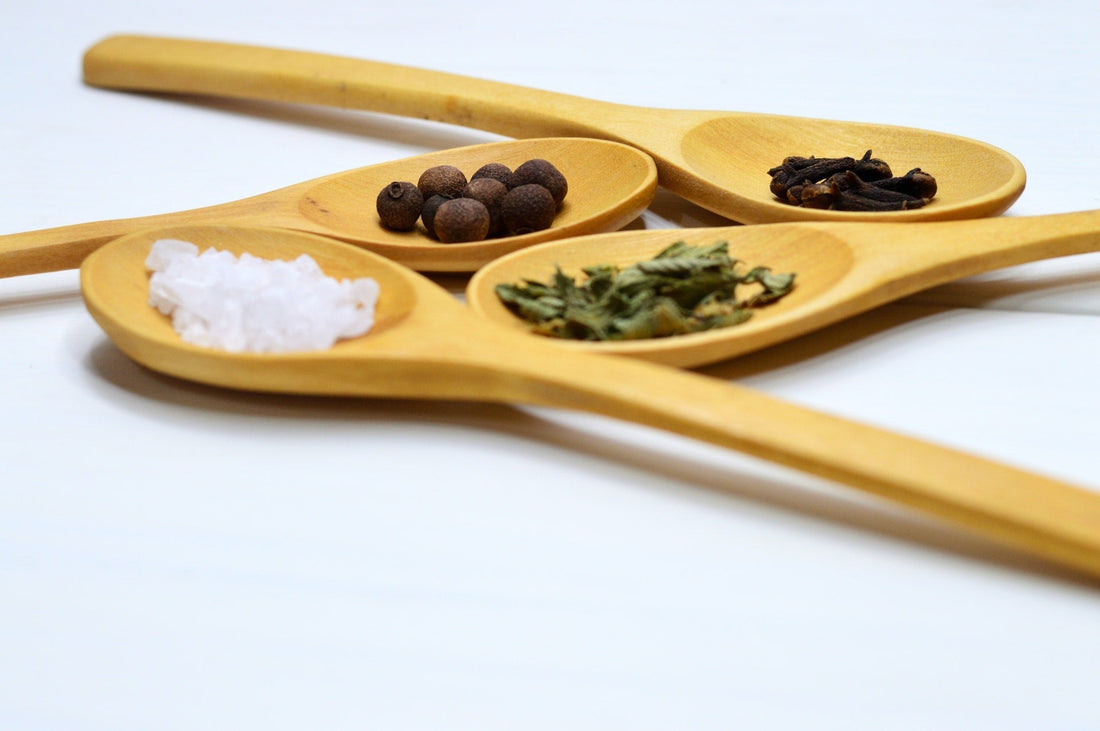
Salt can add a fantastic taste and texture to your cooking. As such, it’s always tempting to reach for your salt mill with every stir of the pot. However, if you’re trying to watch your sodium intake, you may be wondering how you can add flavor to your food without it.
In this article we’ll explore how to add flavor with no salt, providing you with some easy go-to tricks to use in the kitchen.
Why should you reduce your salt intake?
Though there are lots of different salt types, whichever one you use will contain high levels of sodium which is known to raise your blood pressure. As high blood pressure increases your risk of having a stroke or developing heart disease, it’s certainly something that most people should be keeping an eye on.

In today’s world, salt is already added to most processed foods, meaning whatever you add on top of this has the potential to make your average daily salt intake skyrocket. Even if your doctor hasn’t advised you to reduce your sodium intake, it’s a good idea to do so of your own accord. Following a low salt diet is certainly a healthier way to eat — and it isn’t actually as hard as it sounds.
What is a healthy substitute for salt?
So, what can you use in your cooking instead of salt? Does a substitute even exist? While salt is difficult to replace (with most recipes calling for at least a pinch), there are various easy ways to mimic some of the much-loved properties of salt.
While these replacements aren’t simple substitutions, they can all be used to add a much-needed extra dimension to your cooking.
Tips for cooking without salt
Herbs and spices
If you normally use salt to add flavor to your dishes, then the thought of not using any salt (or very little of it) might be enough to send panic through your veins! Although you might not believe it until you try it, adding a good mix of herbs and spices to your cooking can bring enough brightness or richness to your cooking that your sparse use of salt goes unnoticed. Keep some fresh herbs and a spice rack on a counter in your kitchen to have them on hand, or you might just reach for the salt without thinking.

Opt for herbs and spices that have a distinct taste such as chili, mint, rosemary, ginger, or cumin, and make sure your cooking still packs a punch! You can still have the salt shakers on the table for those who want to add a sprinkle when eating, but see how people like your unsalted version first. If you find yourself tempted to add a garnish, reach for the pepper grinder to satisfy those flavor intensity cravings.
Citrus
The acidity packed inside citrus fruits can do wonders for your cooking, often introducing a well-needed extra dimension to the flavor profile of a dish. While lemons perfectly complement chicken and fish, limes are a staple of Asian cuisine. What’s more, most people are partial to the fresh and fruity taste of citrus, so there’s no excuse not to get experimenting! Citrus fruits won’t suit every dish, but when they do they can lift your cooking to a whole new level.
Vinegar
Adding a dash of vinegar to your cooking can enhance your perception of saltiness, and even if you don’t agree, you will probably find that it at least brightens the flavors in a dish. If you used to add salt to liven up a flat, bland taste, then try using red or white wine, balsamic, or apple cider vinegar to the mix to add that sharp edge. Different vinegars will be better suited to different dishes, so do a bit of research to find the best combinations. For instance, while balsamic vinegar is great for glazing meats and drizzling onto salads, red wine vinegar can be used to infuse vegetables with a wonderful taste. Invest in a stylish vinegar pourer and make vinegar a key ingredient in your kitchen.
Cheese

As cheese is naturally quite salty in flavor, swapping a dash of salt for a sprinkling of cheese shouldn’t be too much of a compromise. Plus, most people adore cheese, so they might even prefer this substitution! If you don’t want to add a whole block but still want that cheesy flavor, opt for a hard, aged cheese such as Parmesan as a little goes a long way. It’s also recommended that you use less of a more pungent cheese as cheese can also contain a high level of salt — and you don’t want to ruin your health conscious efforts.
Garlic and Onions
Most dishes call for at least one aromatic such as garlic, onion, or shallots — and for good reason! These staples provide an excellent base for most dishes and release flavor into your cooking the longer they’re left to cook. Although garlic and onions aren’t simple replacements for salt, if you’re trying to cut salt out of your diet but still want to create tasty meals, then it’s important to pay close attention to the other foundational ingredients in a recipe. Everyone likes putting their own twists on things, but don’t skip these key components — without salt, you’ll need all the flavor that you can get!
Cooking without salt can be difficult at first, but we promise that it gets easier over time. If you’re really struggling with your cravings, you might want to try reducing your salt intake slowly rather than going completely cold turkey. And if you do ‘slip up’ or want to treat yourself, cut yourself some slack — when it comes to having a healthy diet, every little helps.

